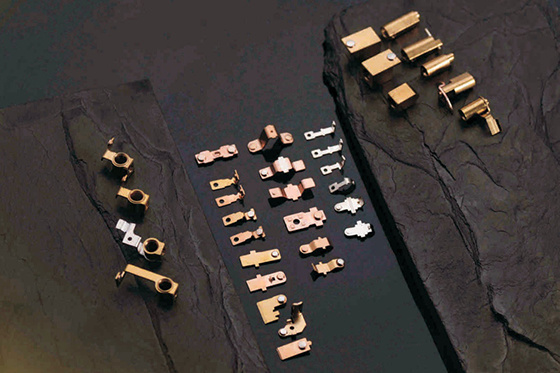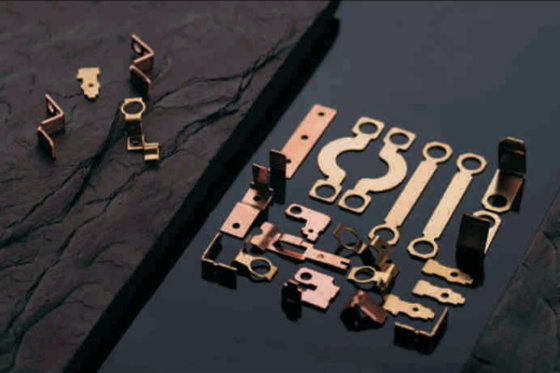Type of contact
Time:
2023-11-30
Disconnectable contacts are an indispensable part of switching appliances. According to their different structures, they can be divided into the following types:
(1) Blade-shaped contact: Its structure is simple, divided into surface contacts and line contacts, and is widely used in low-voltage switches and high-voltage isolation switches.
(2) Butt contact: It has the characteristics of simple structure and fast action speed, but the contact surface is unstable and changes greatly with pressure. It is easy to rebound when working, no self-cleaning effect, and the contact is easy to be burned by arc. This contact is usually used for distribution circuit breakers with rated current below 1000 amps and below 500 amps
(3) Wedge contact: It is composed of a pair of contact pieces and a wedge-shaped contact piece, which is press-fitted on the conductive seat through a stud sleeve spring. Generally, wedge-shaped contacts are used as moving contacts, but there are also contacts clamped on conductive seats, and wedge-shaped contacts are used as fixed contacts in turn. This contact rubs against each other when the moving contact and the static contact contact contact, and the contact surface can be cleaned automatically.
(4) Plug-in contact: The static contact is composed of multiple trapezoidal contact fingers. It is divided into flexible conductive sheet and non-flexible conductive sheet. For the socket with flexible conductive sheet, there is a groove on the contact finger, an insulating sleeve is embedded in the groove, and a coil spring is placed to ensure the pressure of the contact finger on the conductive rod.
(5)Z-shaped contact finger-type sliding contact: the structure is similar to the socket-type contact. It is formed by installing the Z-shaped contact finger in the conductive seat, maintaining the position of the contact finger by a spring, and pressing both sides of the contact finger against the guide rod and the conductive seat respectively. Its advantages are: small height, simple assembly, no conductive sheet, stable contact, and self-cleaning function, so it is widely used.
(6) Rolling sliding contact: the moving contact is a circular conductive rod, and the fixed contact is composed of two circular conductive rod seats and a pair of copper rollers installed between the conductive rod and the conductive seat. Springs are installed on both sides of the roller, and the contact between the roller and the conductive rod, the roller and the conductive seat is maintained by the pressure of the spring.





